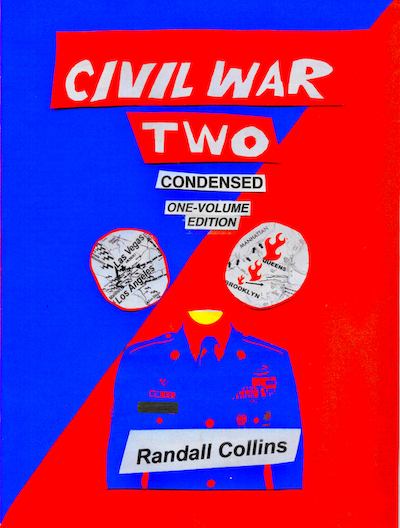“For a man with a hammer, everything looks like a nail.”
Whoever said this or repeats this must never have held a hammer in his or her hand. It might be true of a two-year-old. But any carpenter, or any adult who has a hammer, uses it for particular purposes and then puts the hammer away. You drive in a nail to hang a picture. That’s it. No one but a homicidal maniac in a frenzy (and actually, not too many of those) goes around hitting everything in sight with a hammer.
How did this stupid cliché become popular? Probably because it was used in a political argument, like the anti-nuclear argument that having nuclear weapons is dangerous because “to a man with a hammer, everything looks like a nail.” Even Harry Truman, who is the only man who ever used that particular hammer, had a special motivation. Some historians say he felt inferior in the shadow of FDR, and wanted to show off to Stalin and Churchill that he was powerful too. That doesn’t make Truman an exemplar; and 70-plus years of nuclear restraint since then (gratia deo) shows that people aren’t as stupid with dangerous things as this saying implies they are.
“Beauty is truth, truth beauty--that is all
You know on earth, and all you need to know.”
This one is from Keats, Ode to a Grecian Urn. It sounds wonderful, until you think about it. It makes four statements, all of which are untrue.
“Truth is beauty.” No; a lot of truth isn’t beautiful; some things that are true are very ugly. Occasionally something that is true is also beautiful, but this doesn’t happen often enough.
“Beauty is truth.” Oh yeah? On the whole beauty is fantasy; it’s an ideal; it’s something our best artists and thinkers create. Even Plato, the philosopher closest to the sentiment Keats expresses, did not regard truth and beauty as part of the ordinary world of experience, but an ideal world far transcending it. A much keener observer of the world of art, André Malraux, wrote in his globe-spanning The Voices of Silence that artists never just copy the natural world, they select elements from it; what they see in their mind’s eye is what they have learned from previous artists, and when they create something new it is not part of our ordinary world but creates another world for us to experience (by going to art museums).
“That is all you know on earth.” Sure, if we don’t count anything as knowledge such as practical skills for getting around in our everyday worlds, science, mathematics, history, law, medicine, sociology, whatever. “And all you need to know.” Ditto.
Keats’s poem, Ode to a Grecian Urn, is self-refuting. It is beautiful, but it isn’t true.
“No one is free, as long as anyone is in chains.”
Try telling that to someone who is in prison. Most of them would prefer to be on the outside.
The word “free” has no meaning, if it doesn’t contrast with something that isn’t free. Orlando Patterson’s book on the history of slavery, Slavery and Social Death, makes the point that the existence of slavery gave impetus to the word freedom, which became part of political vocabulary precisely in the places where slavery was widespread (such as ancient Rome). It is echoed in the English national anthem: “Rule, Brittania! Brittania rule the waves! Britons never, never shall be slaves!” And thus the image of slavery is equated with not being the one who rules.
Of course, “No one is free, as long as etc...” is a piece of rhetoric. It is a claim for sympathy and altruism for the plight of others. But the track record of any particular social movement for freeing some particular group from something equated with slavery has so far never been without its own blind spots. Like most political slogans, it pretends to be more universal than it really is. One thing we can probably be sure of is: no matter how altruistic we think we are today, there will be people in the future who will accuse us of some inequity we haven’t yet thought of.

